Category
Hot News
crazywin88 Hurricane Milton: Fil-Am leader recounts ‘terrifying’ experience, shares insights
Updated:2024-10-26 02:45 Views:52
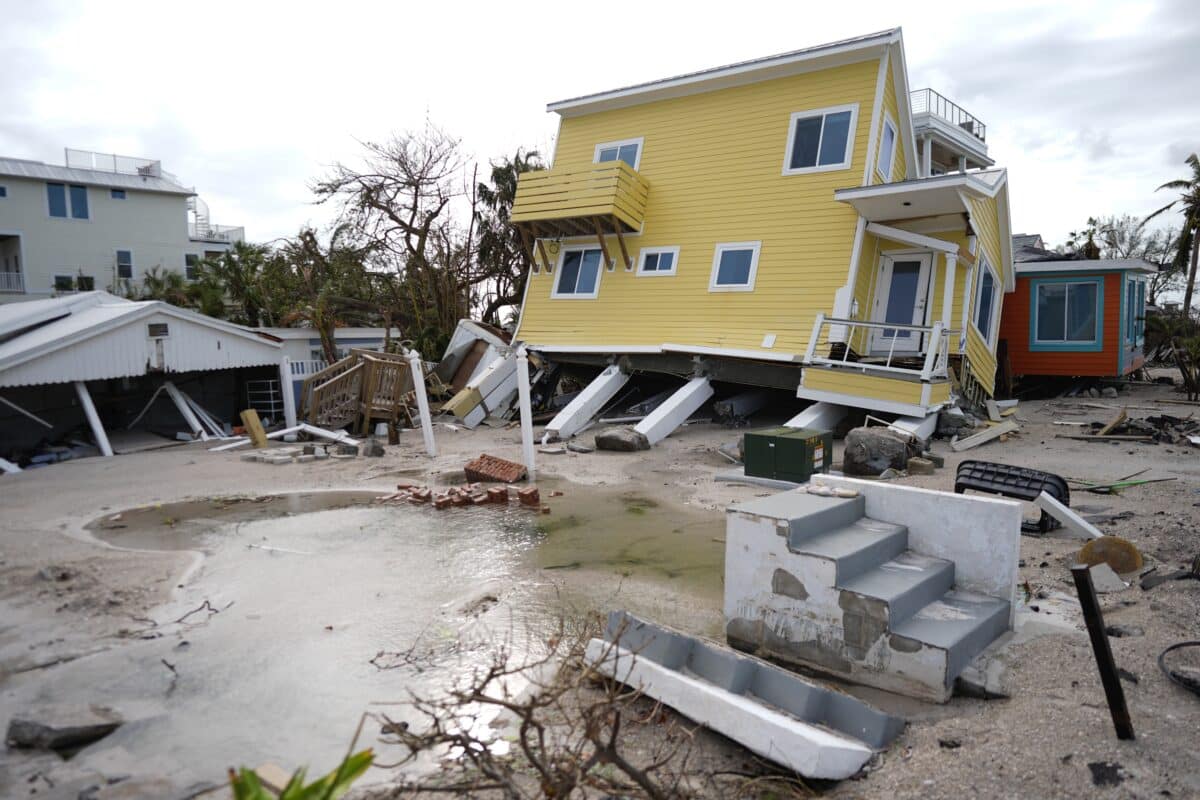
A house, center, lies toppled off its stilts after the passage of Hurricane Milton, alongside an empty lot where a home was swept away by Hurricane Helen, in Bradenton Beach on Anna Maria Island, Fla., Thursday, Oct. 10, 2024. (AP Photo/Rebecca Blackwell)
 NEW YORK — Hurricane Milton, a powerful storm that ravaged Florida just weeks after hurricane Helene, has left the state reeling. With widespread damage and ongoing recovery efforts, the impact on Floridians is profound.
NEW YORK — Hurricane Milton, a powerful storm that ravaged Florida just weeks after hurricane Helene, has left the state reeling. With widespread damage and ongoing recovery efforts, the impact on Floridians is profound.
But for Filipino Americans, the challenges are compounded by a sense of déjà vu and the urgency to support the community.
This interview delves into the experiences of Brendan Flores, a prominent national leader in the Fil-Am community, as he navigates the aftermath of Hurricane Milton.
Subscribe to our daily newsletter
Brendan, who is based in Florida, shares his personal struggles, the resilience of the Fil-Am community and his insights on the importance of preparation and community support in the face of increasingly frequent and intense hurricanes.
INQUIRER.NET USA: How is the community coping with Hurricane Milton, and what support systems are in place for the Fil-Am community during this crisis?
BRENDAN FLORES [BF] — “It’s been very challenging for the community to cope with Hurricane Milton. Many have yet to return home to assess the full extent of the damage. The emotional and physical toll will be heavy, and the community will need to rely on each other while working with local and state agencies to secure much-needed resources.
ADVERTISEMENT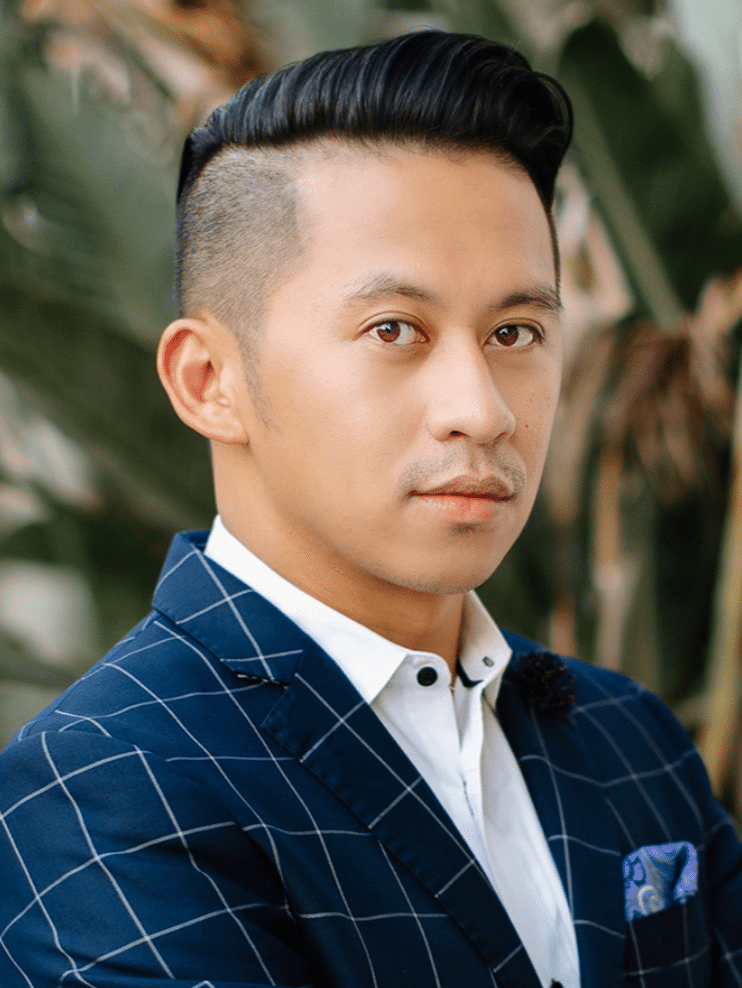

Brendan Flores
“As for the Fil-Am community, we’re still in the beginning stages of organizing support. I’ve been speaking to friends in various organizations I’m involved with, particularly the National Federation of Filipino American Associations (NaFFAA), Filipinos Advancing Creative Education, and The PUSO Foundation, to see if there was an opportunity for collaboration. We’re exploring ways to come together, whether it’s through financial assistance, volunteering for cleanup efforts, or finding other ways to provide support. It’s early, but we’re working on a plan to ensure our community has the help it needs to recover.”
INQ: Is this the worst storm you’ve experienced in Florida, and how does it compare to past hurricanes?
BF — “Yes, this has been the worst storm I’ve experienced here in Florida, especially because we’re still barely recovering from the devastation left by Hurricane Helene just two weeks ago. It’s been a relentless period of destruction, and now, facing another catastrophic storm so soon afterward is incredibly challenging.
ADVERTISEMENT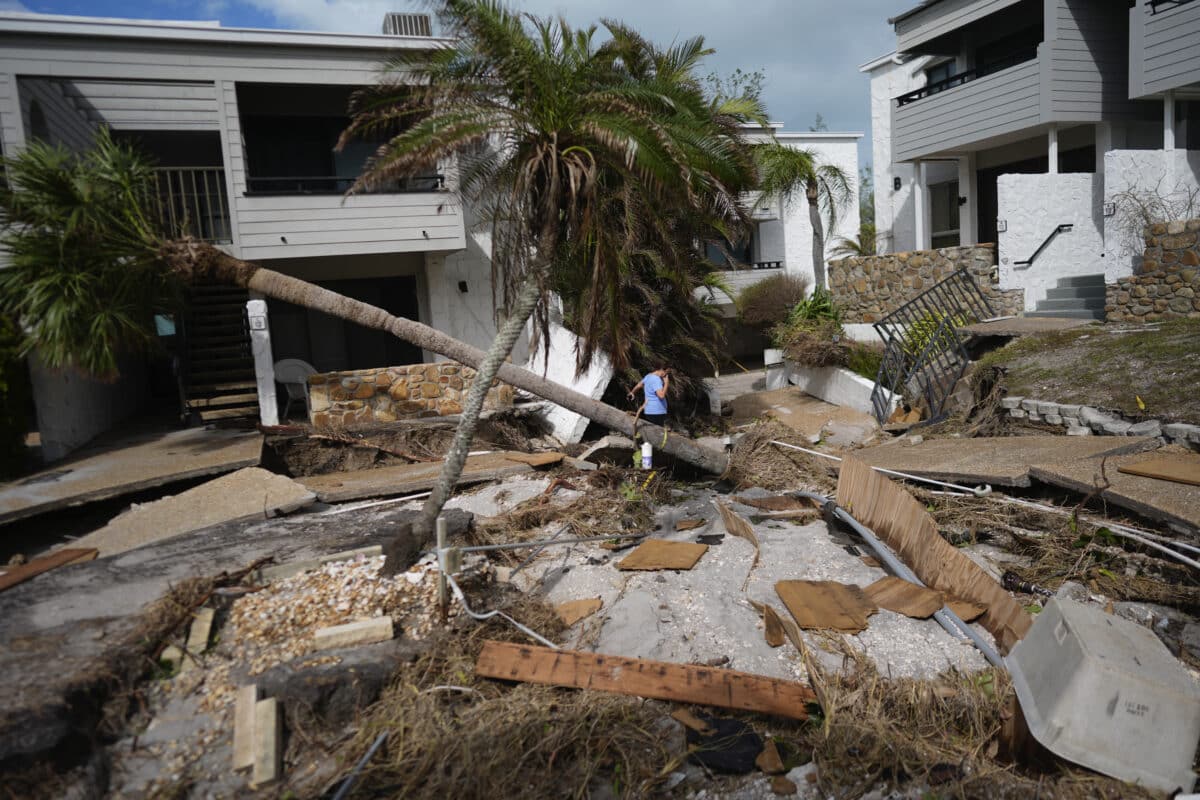

A person picks their way along damaged walkways in the beachfront condominium community of Bahia Vista Gulf, following the passage of Hurricane Milton, on the island of Venice, Fla., Friday, Oct. 11, 2024. (AP Photo/Rebecca Blackwell)
“We’re used to hurricanes in Florida, where we average around seven or so hurricanes per season, but this one was particularly terrifying. Usually, living inland between Tampa and Sarasota in Lakewood Ranch, we escape the worst of the storms as they tend to hit coastal areas or pass north or south of us. This time, though, the storm made landfall less than 25 minutes from my home, and the damage has been significant. We’ve got trees down, plants uprooted, and my neighbor’s lanai cage flew off. Post lights and gutters have been ripped from houses.
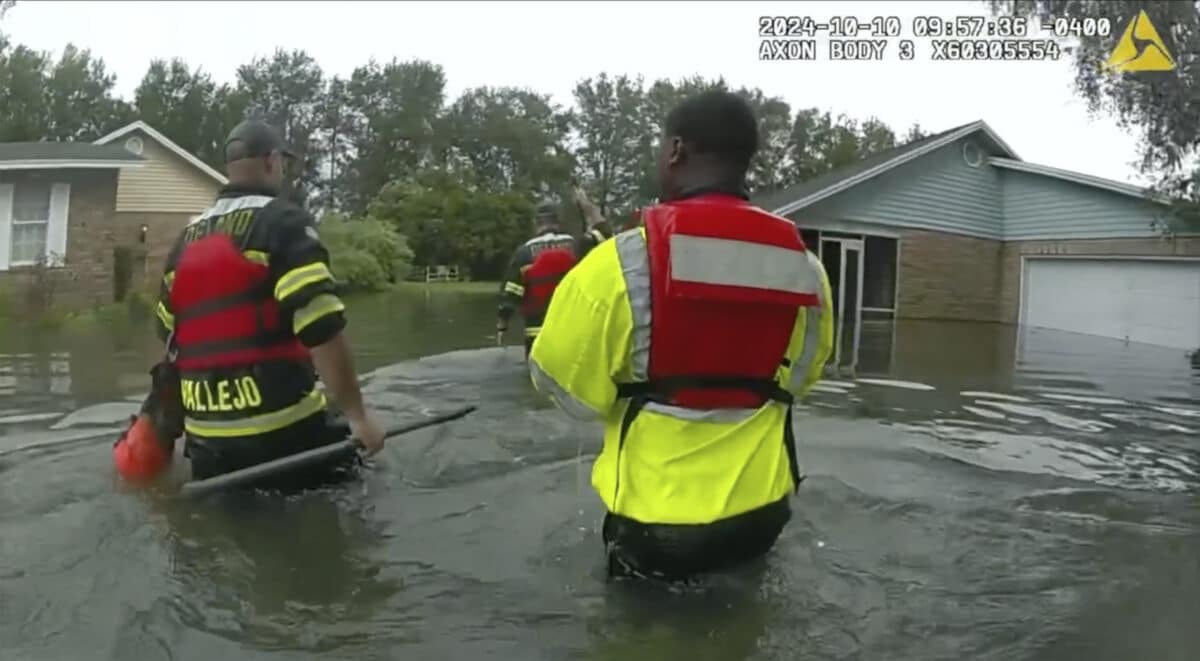

This image taken from Deland Police bodycam shows DeLand police and fire crews conduct water rescues after Hurricane Milton on Thursday, Oct. 10, 2024 in DeLand, Fla. (City of DeLand, Fla., via AP)
“The winds were terrifying, over 110 mph, making it impossible to sleep. It felt like I was living in a horror movie, with the power flickering on and off, and at one point, I genuinely thought my front door would blow open. We’ve been advised to stay home and let first responders do their job because fatalities often happen after storms when people aren’t careful. Right now, 3 to 4 million people in Florida are without power, and tragically, at least 10 people have been confirmed dead. The emotional and physical toll of facing two major hurricanes back-to-back is overwhelming, but as a community, we’re doing our best to recover and help each other through it.”
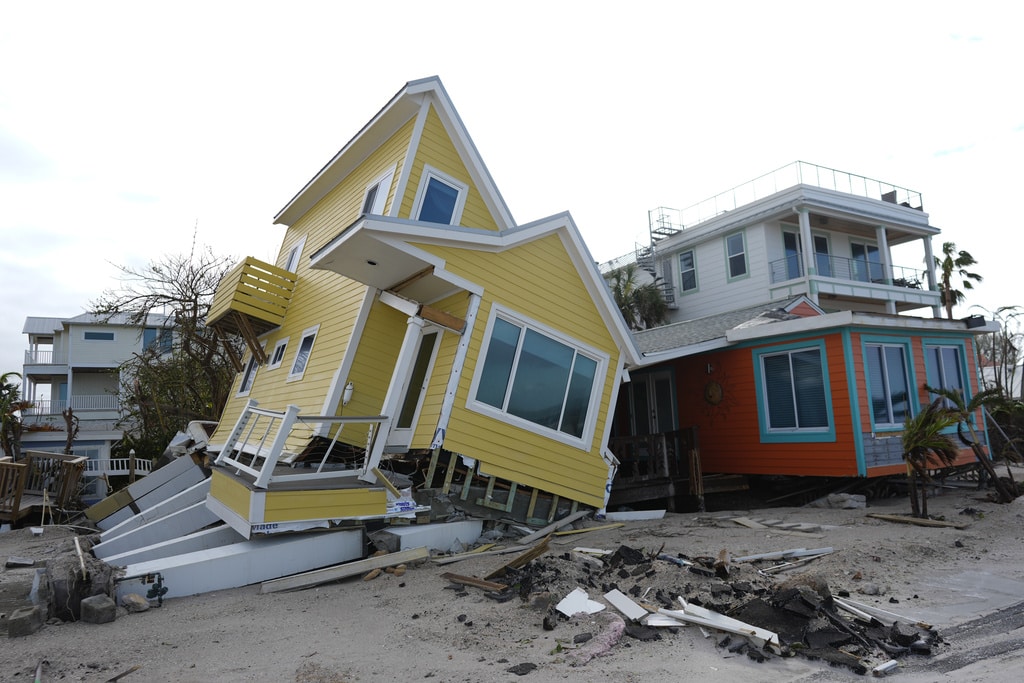

A house lies toppled off its stilts after the passage of Hurricane Milton, in Bradenton Beach on Anna Maria Island, Fla., Thursday, Oct. 10, 2024. (AP Photo/Rebecca Blackwell)
INQ: What specific challenges are you and the FilAm community facing as a result of Hurricane Milton?
BF — “The challenges we are facing as a result of Hurricane Milton are numerous and overwhelming. Aside from the financial burden of repairing damages, tedious cleaning, and the time spent on the phone dealing with insurance, utilities and service providers, the emotional toll is exhausting. This is especially true for those of us who are still recovering from the effects of Hurricane Helene just two weeks ago.
“One of the most heartbreaking things I’ve heard today is that a kababayan in her 70s lost her life when a tree fell on her. It’s devastating, and as a community leader, I can’t help but think about our elders, particularly those in West Florida and across the state. Many of them are vulnerable, and this storm has made it clear how much we need to be there for one another.
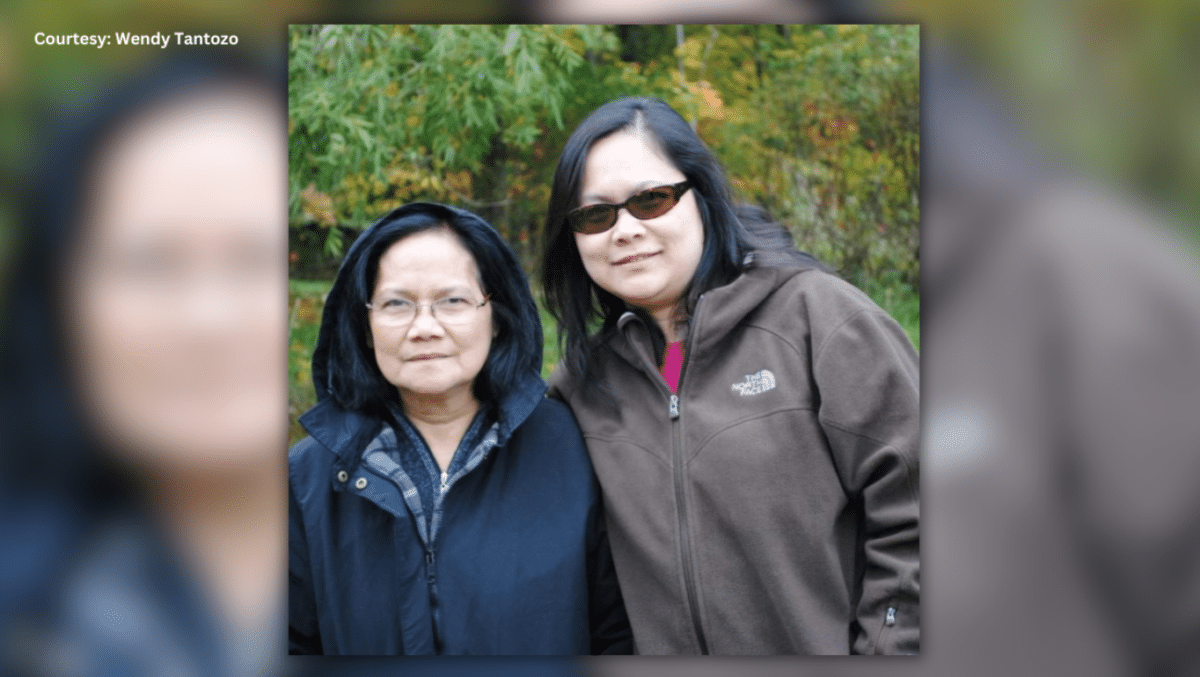

Luisa Santos (left) was killed on her 73rd birthday when a tree fell on her while cleaning up in the aftermath of Hurricane Milton. Image: @WCPO/X
You may like: Elderly Fil-Am killed by falling tree in wake of Hurricane Milton
“The FilAm community, like others, is struggling with not just the physical rebuilding but the emotional weight of these back-to-back disasters. This is a time when the spirit of bayanihan, our tradition of coming together and helping one another, is crucial. Now more than ever, we need to rely on that sense of community support to get through this.”
INQ: Why do you think Florida is particularly susceptible to hurricanes, and what measures can residents take to prepare?
BF — “Florida is particularly susceptible to hurricanes due to its geographic location, which places it right in the path of storms forming in the Atlantic Ocean, the Gulf of Mexico and the Caribbean. The state is surrounded by warm waters, which act as fuel for hurricanes, allowing them to strengthen before making landfall. Florida’s long coastline and flat terrain also mean that there is little to slow down the winds and storm surge once hurricanes hit, making the entire state vulnerable.
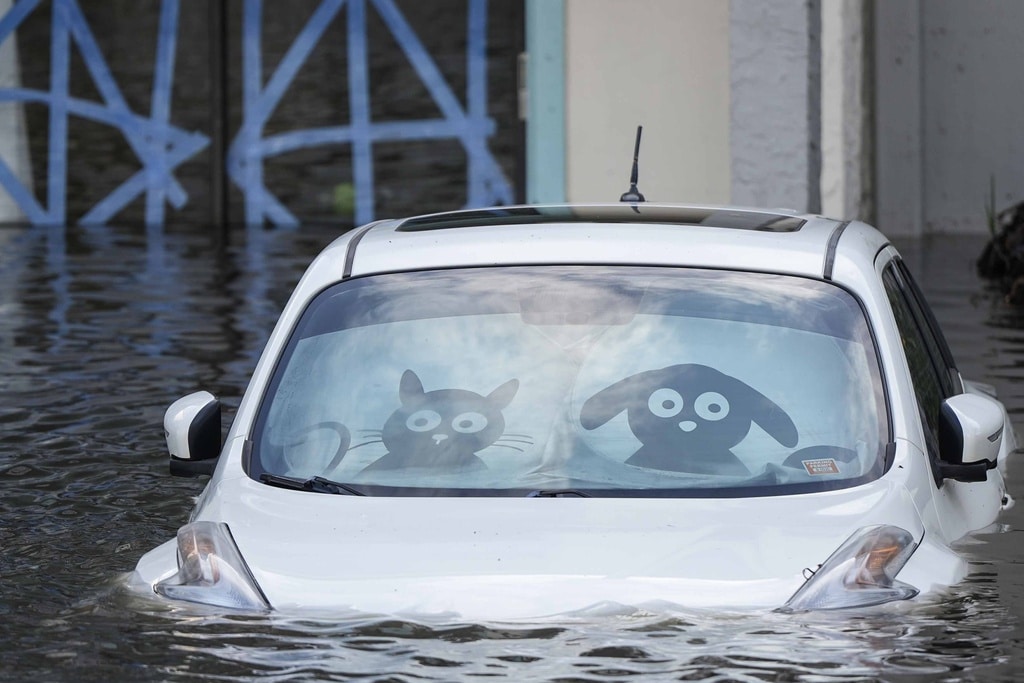

A car is submerged in flood water at an apartment complex in the aftermath of Hurricane Milton, Thursday, Oct. 10, 2024, in Clearwater, Fla. (AP Photo/Mike Stewart)
“In my opinion, this issue goes beyond any political debates. It’s about science and trusting the experts. I firmly believe in the overwhelming evidence presented by scientists, and it’s clear that global warming is playing a significant role in making storms like Hurricane Milton more frequent and intense. Putting politics aside, we need to be mindful of the impact climate change is having on our environment. Warmer ocean temperatures, which fuel stronger hurricanes, are becoming the norm, and it’s crucial that we pay attention to the science behind it. This isn’t just about today; it’s about protecting future generations and preparing for the increased risks that come with a warming planet.
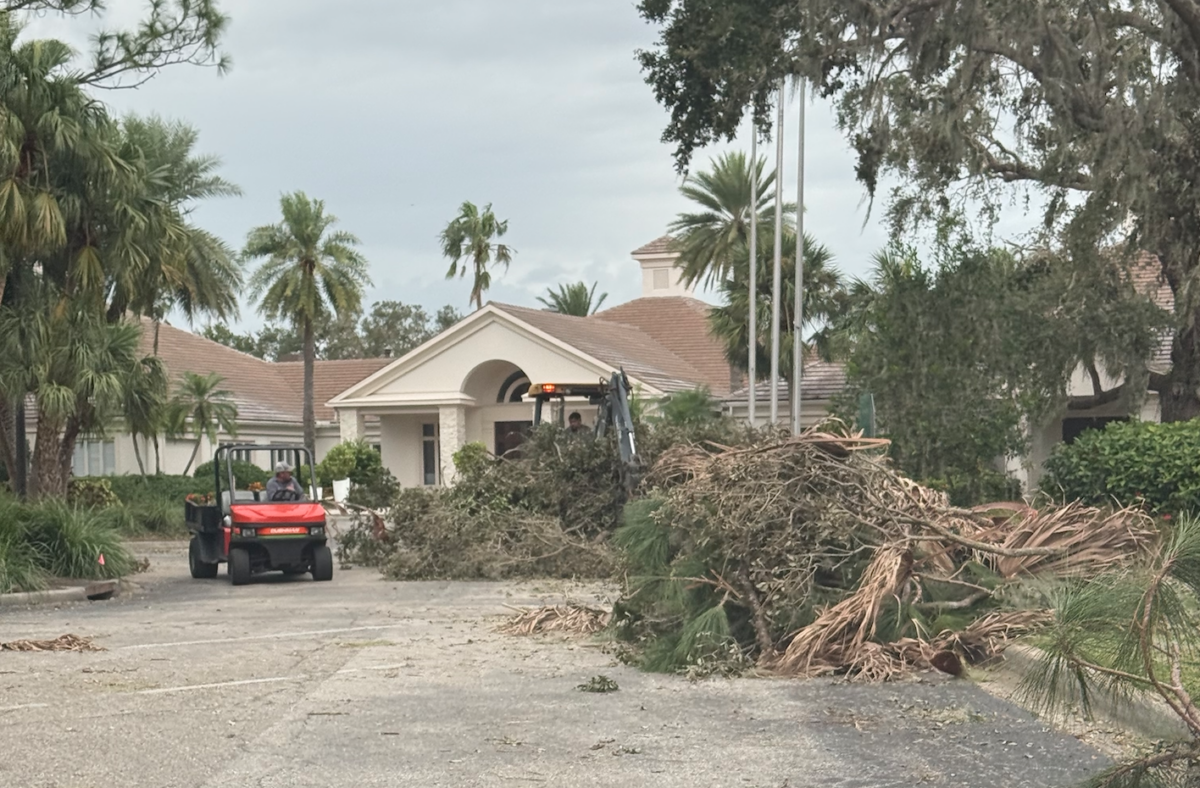

Photo by Brendan Flores
“To prepare for hurricanes, it’s essential to develop an emergency plan, including knowing evacuation routes, having a communication plan with family members and designating a safe place if needed. An emergency kit with food, water, medications and first aid supplies for at least three days is crucial, and strengthening your home by securing doors and windows and trimming trees can help mitigate damage. Staying informed through weather updates ensures readiness for evacuations, while up-to-date insurance and documentation aid with post-storm claims. I learned the hard way when my flight got canceled, and I didn’t have time to stock up on groceries or gas. Being stuck at home without essentials was a nightmare, and it’s a reminder of how quickly things can escalate when you’re not fully prepared.”
INQ: Have you received any assistance from local or federal agencies / how effective has that support been?
BF — “I have not personally received any direct assistance from local or federal agencies yet, but to the Governor’s credit, he has been as prepared as possible, ensuring that regular updates are provided to keep the public informed. On a national level, the President has also extended support to Florida during this challenging time, and the coordination between state and federal agencies has been noticeable. I strongly encourage everyone, especially our kababayan, to take advantage of the available resources or any government assistance that has been set up. These programs can provide much-needed relief, and it’s important that we use the help being offered to rebuild and recover efficiently.”
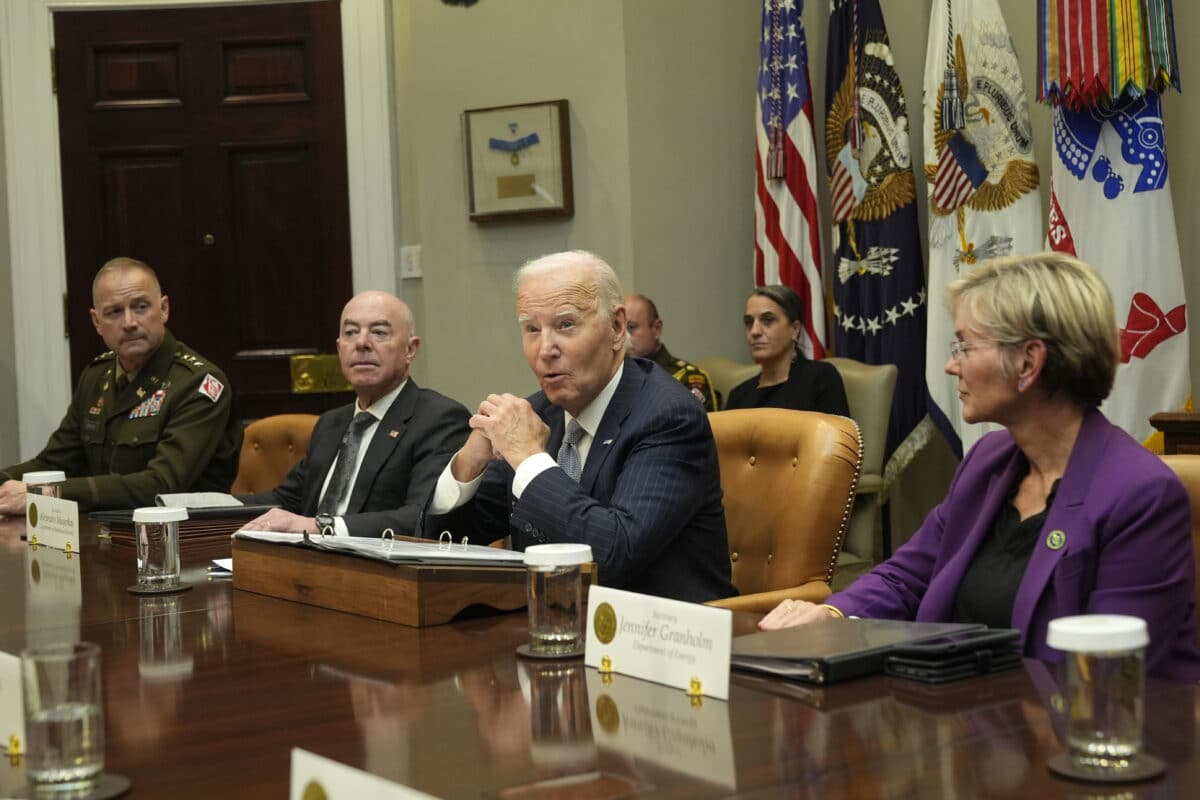

President Joe Biden speaks about the federal government’s response to Hurricanes Milton and Helene, in the Roosevelt Room of the White House, Friday, Oct. 11, 2024, in Washington. Pictured from left are Lieutenant General William H. “Butch” Graham Jr., Chief of Engineers and Commanding General, U.S. Army Corps of Engineers, Homeland Security Secretary Alejandro Mayorkas and Energy Secretary Jennifer Granholm. (AP Photo/Manuel Balce Ceneta)
INQ: Are there any lessons learned from previous storms that are helping you and the community navigate this situation?
BF — “Absolutely. One of the key lessons learned from previous storms is the importance of early preparation and communication. This time around, not only did everyone take steps to board up homes and protect their businesses, but local and state governments were proactive in issuing notices and closing public offices early. What’s really impressive is how many people heeded the advice, whether evacuations were mandatory or voluntary. It seems more residents have learned from past experiences to take these warnings seriously, and as a result, more lives have likely been saved. This collaborative effort, with both government and residents taking swift action, has been essential in navigating this storm.”
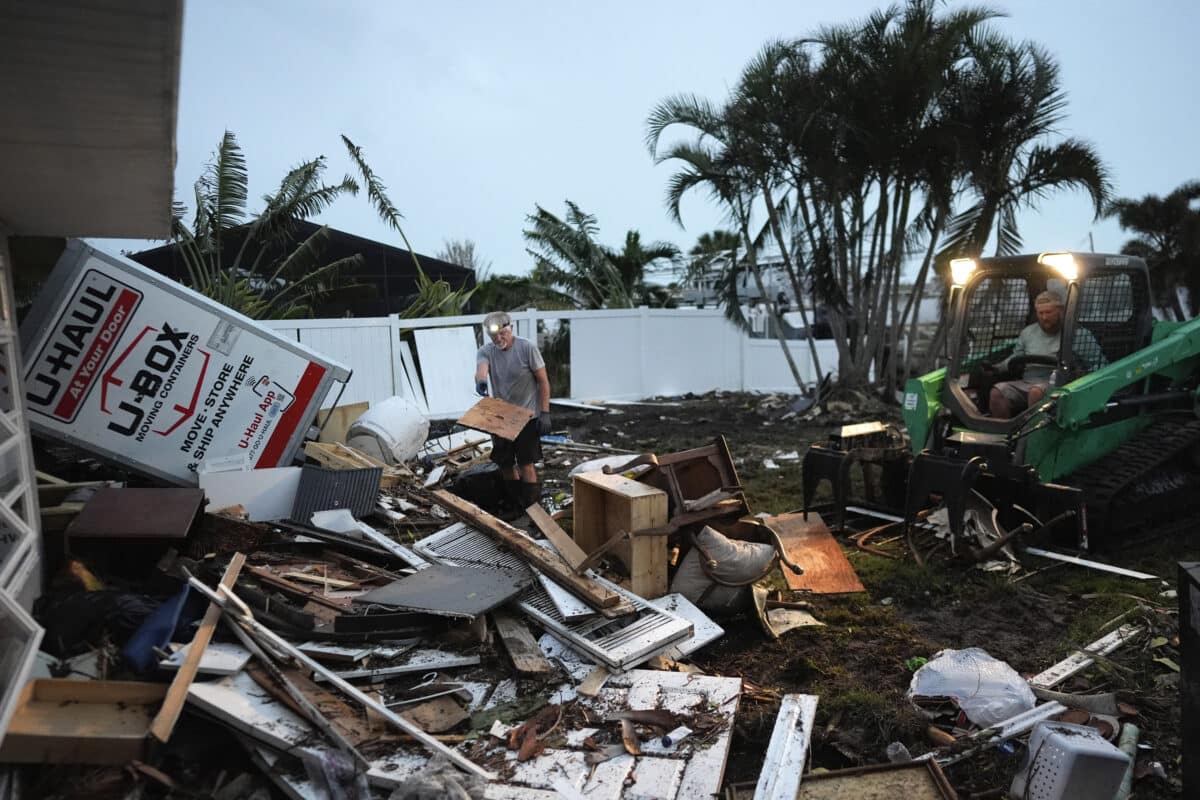

Homeowner Robert Turick, 68, left, and storm waste removal contractor Sven Barnes work to clear debris that Hurricane Milton storm surge swept from other properties into Turick’s canal-facing back yard, in Englewood, Fla., Friday, Oct. 11, 2024. Turick, whose family has owned the home for more than 25 years, said it had never flooded until 2022’s Hurricane Ian, but since then, it has flooded in three more hurricanes, each bringing higher water levels than the last. (AP Photo/Rebecca Blackwell)
INQ: In light of the increasing frequency of storms, are you considering relocating and if so, where would you move and why?
BF — “Yes, I have considered relocating, though it’s a personal decision influenced by various factors. I generally move every 5-6 years, and I’ve been on the west coast of Florida for about six years now. I truly love it here, and I would like to keep a home in the area. However, with my national engagement, my busy schedule, and my work in finance, it makes sense to be in a larger city where there’s easier access to a major airport.
“I’ve thought about moving internationally, but if I stay in the U.S., I’m considering New York or Texas. New York is a top choice because I visit frequently, and the convenience of having multiple major airports is enticing. Plus, I think it’s one of those experiences in life; you have to live in the Big Apple at least once. Texas is also on the radar because it’s booming, and like Florida and Nevada, it offers better tax advantages. Both places have their own appeal, and with the increasing frequency of storms in Florida, it might be time to make that move sooner rather than later.”
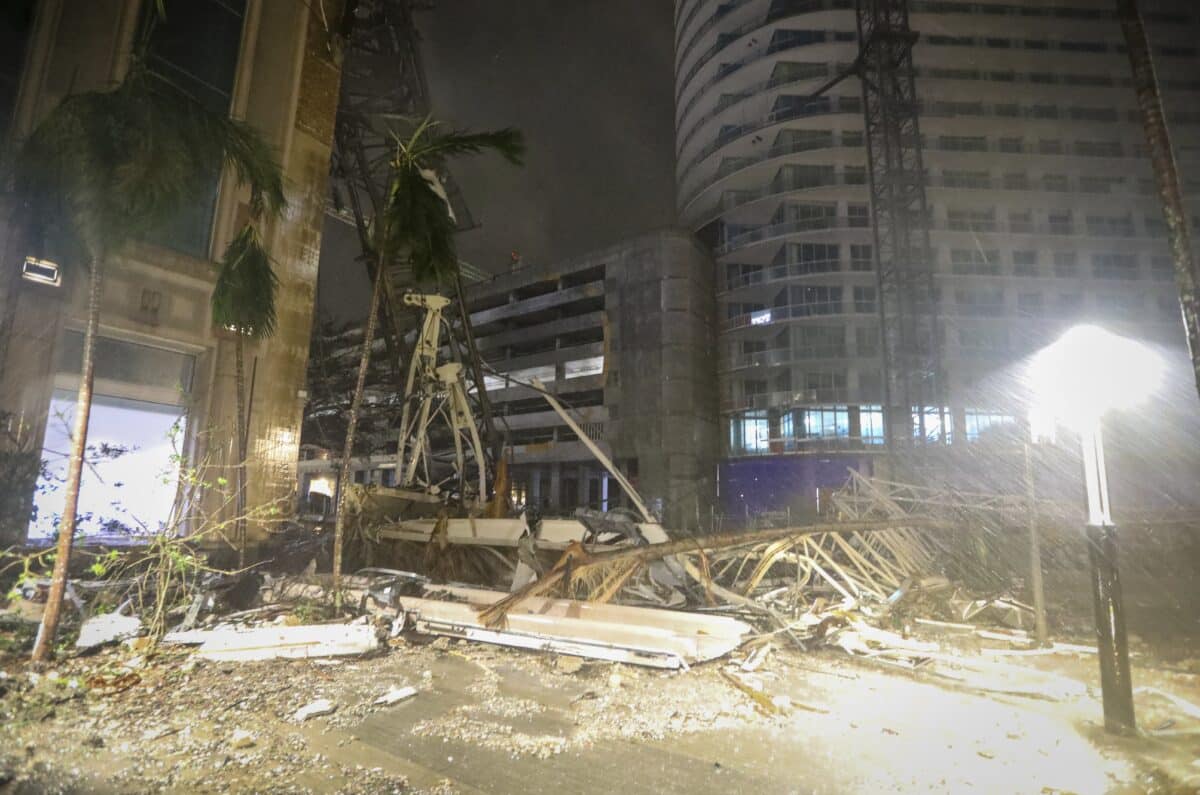

Debris covers the ground near a crane that fell onto a building along 1st Avenue South in St. Petersburg, Fla., as Hurricane Milton’s strong winds tore through the area Thursday, Oct. 10, 2024. (Chris Urso/Tampa Bay Times via AP)
INQ: What message do you have for other residents in Florida and the broader Fil-Am community during this challenging time?
BF — “To my fellow Floridians and the broader Filipino American community, I want to remind you all to stay strong and continue to be kind to one another. These times are challenging, but we can get through them by supporting each other. Offer help to your neighbors, even in small ways, because we can all use a bit of extra support right now. Let’s demonstrate the true spirit of bayanihan, the Filipino tradition of coming together as a community, not just within the Fil-Am community but also with everyone who has been impacted by this storm.
“Don’t hesitate to take advantage of the resources and assistance that are available. These programs are here to help, so make sure you’re leveraging them when you need to. Most importantly, never lose faith. The man above is always listening. In these moments, it’s essential to trust in His plan and remember not to lean on your own understanding but to give your worries and fears to Him. Together, we will rebuild and emerge stronger.”
Want stories like this delivered straight to your inbox? Stay informed. Stay ahead. Subscribe to InqMORNING crazywin88
MORE STORIES Liam Payne: Beloved celebrity’s death can be painful – but collective grief can help Curry leads Golden State Warriors in 139-104 season-opening Former Presidents Obama, Clinton urge Fil-Ams in Nevada to vote early Don't miss out on the latest news and information.
